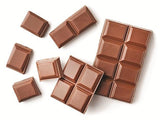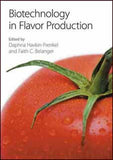Chemistry and Technology of Soft Drinks and Fruit Juices, 3rd Edition Philip R. Ashurst
March 2016 Wiley-Blackwell 424 Pages
DESCRIPTION
Soft drinks and fruit juices are produced in almost every country in the world and their availability is remarkable. From the largest cities to some of the remotest villages, soft drinks are available in a variety of flavours and packaging. Over the last decade, soft drinks and fruit juices have been the subject of criticism by the health community and there is considerable pressure on beverage manufacturers to reduce, or even remove, the sugar content of these products.
Chemistry and Technology of Soft Drinks and Fruit Juices, Third Edition provides an overview of the chemistry and technology of soft drinks and fruit juices, covering ingredients, processing, microbiology, traceability and packaging as well as global market trends. This fully revised edition now includes chapters on topics that have become prominent in the industry since publication of the previous edition namely: water use and treatment, and microbiology technologies. The book is directed at graduates in food science, chemistry or microbiology entering production, quality control, new product development or marketing in the beverage industry or in companies supplying ingredients or packaging materials to the beverage industry.
TABLE OF CONTENTS
Contributors xv
Preface xvi
1 Introduction 1
P.R. Ashurst
1.1 Overview 1
1.2 Soft drinks 1
1.2.1 Ready‐to‐drink products 2
1.2.2 Concentrated soft drinks 2
1.2.3 Legislation 3
1.2.4 Product types 4
1.2.5 Development trends 6
1.2.6 Nutrition 7
1.2.7 New product trends 8
1.3 Fruit juices 8
1.3.1 Processing technology 9
1.3.2 Adulteration 10
1.3.3 Other processes 12
1.3.4 Nutrition 12
1.4 Packaging 13
1.5 Summary 14
References and further reading 14
2 Trends in beverage markets 15
E.C. Renfrew
2.1 Introduction 15
2.2 Definitions 15
2.3 Beverage consumption trends 16
2.3.1 Bottled water 17
2.3.2 Carbonated soft drinks 17
2.3.3 100% juices, nectars and fruit drinks 19
2.3.4 Energy drinks 19
2.3.5 Ready‐to‐drink (RTD) tea and ready‐to‐drink coffee 20
2.3.6 Coffee 20
2.3.7 Tea 21
2.3.8 Beer 21
2.3.9 Wine 22
2.3.10 Milk and flavoured milks 22
2.4 Consumption charts 23
2.5 Regions and markets 25
2.6 Market share charts 26
2.7 Main drivers in consumption 28
2.7.1 The search for ‘natural’ 28
2.7.2 Adult soft drinks 29
2.7.3 Protein drinks 29
2.8 Conclusion 29
3 Fruit and juice processing 31
B. Taylor
3.1 Introduction 31
3.2 Fruit types 32
3.2.1 Botanical aspects and classification of fruit types 32
3.2.2 Harvesting considerations for berry, citrus, pome, stone and exotic fruits 35
3.3 Fruit types for processing 36
3.3.1 Pome fruits 36
3.3.2 Citrus fruits 38
3.4 General comments on fruit juice processing 39
3.4.1 Processing of ‘fleshy’ fruits 40
3.4.2 The use of enzymes in fruit juice processing 43
3.4.3 Extraction of citrus juices 46
3.5 Juice processing following extraction, ‘cleaning’ and clarification 48
3.5.1 Juice concentration by evaporation 49
3.5.2 Freeze concentration 50
3.5.3 Hyper‐ and ultrafiltration 50
3.6 Volatile components 51
3.6.1 Spinning cone column 52
3.6.2 Composition of fruit juice volatiles 53
3.7 Legislative concerns 54
3.7.1 European fruit juice and nectars directive and associated regulations 54
3.7.2 AIJN Guidelines 56
3.7.3 Labelling regulations and authenticity 57
3.7.4 Juice in the diet – ‘five‐a‐day’ 58
3.8 Quality issues 58
3.8.1 Absolute requirements 58
3.9 In conclusion 62
References and further reading 64
4 Water and the soft drinks industry 65
T. Griffiths
4.1 Usage of water in the industry 65
4.2 Sources of water 66
4.2.1 Water cycle 66
4.2.2 Surface water 67
4.2.3 Ground water 67
4.3 Quality standards relating to water 68
4.3.1 UK legislative standards 68
4.3.2 Internal and customer standards 68
4.4 Processing water 69
4.4.1 Required quality 69
4.4.2 Starting quality 72
4.4.3 Processing options 75
4.5 Analytical and microbiological testing of water 83
4.5.1 Chemical tests 83
4.5.2 Microbiological tests 84
4.6 Effluents 84
4.6.1 Potential contaminants of water waste 84
4.6.2 Use of ‘grey’ water 85
4.6.3 Clean‐up and reuse of effluents 85
Further reading 87
References 87
5 Other beverage ingredients 88
B. Taylor
5.1 Introduction 88
5.2 Factors influencing development of the industry 88
5.3 The move towards standardisation 91
5.4 The constituents of a soft drink 94
5.5 Water 94
5.5.1 Requirements 94
5.5.2 Quality of fresh water 96
5.5.3 Water hardness 96
5.5.4 Water treatment 96
5.5.5 Water impurities and their effect 97
5.6 Acidulents 98
5.6.1 Citric acid 98
5.6.2 Tartaric acid 99
5.6.3 Phosphoric acid 100
5.6.4 Lactic acid 101
5.6.5 Acetic acid 101
5.6.6 Malic acid 101
5.6.7 Fumaric acid 101
5.6.8 Ascorbic acid 102
5.7 Flavourings 102
5.7.1 Flavourings and legislation 104
5.7.2 Flavourings in beverage application 106
5.7.3 Water‐miscible flavourings 106
5.7.4 Water‐dispersible flavourings 107
5.8 Colours 112
5.9 Preservatives 115
5.9.1 Microorganisms and beverages 116
5.9.2 Sulphur dioxide 117
5.9.3 Benzoic acid and benzoates 119
5.9.4 Sorbic acid and sorbates 119
5.10 Other functional ingredients 120
5.10.1 Stabilisers 120
5.10.2 Saponins 120
5.10.3 Antioxidants 121
5.10.4 Calcium disodium EDTA 121
5.11 Food safety 122
5.12 Future trends 123
Further reading and references 125
6 Non‐carbonated beverages 126
P.R. Ashurst
6.1 Introduction 126
6.2 Dilutable beverages 127
6.2.1 Overview 127
6.2.2 Nomenclature 127
6.2.3 Ingredients 128
6.2.4 Manufacturing operations 137
6.2.5 Filling and packaging 139
6.2.6 Product range 140
6.3 Ready‐to‐drink non‐carbonated products 140
6.3.1 Overview 140
6.3.2 Formulations 140
6.3.3 Special problems 140
6.3.4 Manufacturing and packing 141
6.3.5 Packaging types 142
6.4 Fruit juices and nectars 142
6.4.1 Processing 142
6.4.2 Packaging 144
Further reading 145
7 Carbonated beverages 146
D. Steen
7.1 Introduction 146
7.2 Carbon dioxide 147
7.3 Carbon dioxide production 148
7.3.1 Fermentation 148
7.3.2 Direct combustion 148
7.3.3 Quality standards 149
7.3.4 Delivery to the customer 149
7.3.5 Precautions 150
7.4 Carbonation 152
7.4.1 Basic considerations 152
7.4.2 Carbonation measurement 154
7.5 Syrup preparation 156
7.6 De‐aeration 157
7.7 Carbonators 158
7.8 Filling principles 160
7.8.1 Gravity filler 161
7.8.2 Counter‐pressure filler 163
7.8.3 Other filler types 167
7.8.4 Clean‐in‐place systems 169
7.9 Process control 171
7.10 Future trends 172
Further reading 173
8 Processing and packaging 174
R.A.W. Lea
8.1 Introduction 174
8.2 Juice extraction 174
8.3 Blending 175
8.3.1 Batch blending 176
8.3.2 Flip‐flop blending 176
8.3.3 Continuous blending 176
8.4 Processing 177
8.4.1 Flash pasteurisation 177
8.4.2 Hot filling 178
8.4.3 In‐pack pasteurisation 179
8.4.4 Aseptic filling 179
8.4.5 Chilled distribution 181
8.4.6 Summary 181
8.5 Control of process plant 181
8.6 Factory layout and operation 182
8.7 Hazard Analysis Critical Control Points 186
8.8 Good manufacturing practice 186
8.9 Cleaning in place 187
8.10 Packaging 188
8.11 Conclusion 191
9 Packaging materials 192
D. Rose
9.1 Introduction 192
9.2 Commercial and technical considerations 193
9.2.1 General considerations 193
9.2.2 Packaging materials 195
9.3 Processing 197
9.3.1 Cold‐filling 197
9.3.2 In‐pack pasteurising 197
9.3.3 Hot‐filling 198
9.3.4 Aseptic filling of bottles 198
9.3.5 Liquid nitrogen injection 202
9.4 Bottles 202
9.4.1 Glass 202
9.4.2 Polyethylene terephthalate 203
9.4.3 High‐density polyethylene 207
9.4.4 Polypropylene 207
9.4.5 Polyvinyl chloride 207
9.4.6 Plastic properties 208
9.5 Closures 209
9.5.1 Metal roll‐on or roll‐on pilfer‐proof closures 209
9.5.2 Vacuum seal closures 210
9.5.3 Plastic closures 211
9.5.4 Crown corks 213
9.6 Cans 213
9.6.1 Metal bottles 218
9.6.2 Plastic cans 218
9.7 Cartons 218
9.8 Flexible pouches 221
9.9 Multipacks 222
9.10 Secondary packaging 223
9.11 Pack decoration 224
9.12 Environmental considerations 225
9.13 Conclusions 228
Acknowledgements 230
10 Analysis of soft drinks and fruit juices 231
D.A. Hammond
10.1 Introduction 231
10.2 Laboratory accreditation 234
10.3 Sensory evaluation 236
10.4 Water 237
10.5 Sweeteners 239
10.5.1 Analysis of natural sweeteners 240
10.5.2 Analysis of high‐intensity sweeteners 245
10.6 Preservatives 249
10.6.1 Benzoic and sorbic acids 249
10.6.2 Sulphur dioxide 251
10.6.3 Dimethyldicarbonate 252
10.7 Acidulants 252
10.8 Carbonation 256
10.9 Miscellaneous additives 257
10.9.1 Caffeine 257
10.9.2 Quinine 258
10.9.3 Other additives 258
10.9.4 Fibre analysis 259
10.9.5 Herbal drinks 260
10.9.6 Osmolality 261
10.10 Analysis of colours used in soft drinks 261
10.10.1 Assessment of colour 263
10.10.2 Synthetic colours 265
10.10.3 Natural pigments 267
10.11 Vitamin analysis in soft drinks systems 272
10.11.1 Fat‐soluble vitamins 274
10.11.2 Vitamin B class 274
10.11.3 Vitamin C 275
10.11.4 Vitamin analysis using immunological procedures 275
10.12 Methods used to detect juice adulteration 276
10.13 Methods used to assess the juice or fruit content of soft drinks 280
10.14 Conclusions 282
References 283
11 Microbiology of soft drinks and fruit juices 290
P. Wareing
11.1 Introduction 290
11.2 Composition of soft drinks and fruit juices in relation to spoilage 291
11.3 Background microbiology – spoilage 293
11.3.1 Sources 293
11.3.2 Yeasts 294
11.3.3 Bacteria 295
11.3.4 Moulds 297
11.4 Microbiological safety problems 299
11.4.1 Escherichia coli 299
11.4.2 Salmonella 299
11.5 Preservation and control measures 299
11.6 Sampling for microbial problems 301
11.7 Identification schemes and interpretation 301
11.7.1 Sample isolation 301
11.7.2 Non‐molecular methods 302
11.7.3 Molecular identification 302
11.8 Brief spoilage case studies 303
11.9 Conclusions 304
References 306
Further reading 309
12 Functional drinks containing herbal extracts 310
E.F. Shaw and S. Charters
12.1 History 310
12.2 The extraction process 313
12.2.1 Extraction heritage 314
12.3 An extraction operation 320
12.3.1 Raw materials 321
12.3.2 Extraction 323
12.3.3 Organic extracts 329
12.3.4 Extract costs 329
12.4 Extract characteristics and their problems 331
12.4.1 Specifications 331
12.4.2 Stability 331
12.4.3 Hazing 332
12.4.4 Availability 333
12.5 Incorporation of extracts in beverages 333
12.5.1 Fruit juice‐based and fruit‐flavoured drinks 333
12.5.2 Mineral‐water based and flavoured water drinks 334
12.5.3 Carbonated and dilutable drinks 334
12.5.4 Energy and sports drinks 334
12.5.5 Regulatory issues 335
12.6 Some commonly used herbs 337
References 354
13 Miscellaneous topics 356
P.R. Ashurst and Q. Palmer
13.1 Introduction 356
13.2 Nutrition 356
13.2.1 Nutritional components 357
13.2.2 Calculation and declaration of nutrition information 360
13.3 Sports drinks 363
13.3.1 Definition and purpose 363
13.3.2 Physiological needs 363
13.3.3 The absorption of drinks 365
13.3.4 Formulation 366
13.4 Niche drinks 369
13.4.1 Alcoholic‐type drinks 369
13.4.2 Energy drinks 370
13.4.3 Functional drinks or nutraceuticals 371
13.4.4 Powder drinks 372
13.5 Dispensed soft drinks and juices 372
13.5.1 Introduction 372
13.5.2 Pre‐mix and post‐mix compared 373
13.5.3 Equipment 373
13.5.4 Outlets 375
13.5.5 Hygiene 375
13.5.6 Post‐mix syrup formulation 376
13.5.7 Post‐mix syrup packaging 377
13.6 Ingredient specifications 378
13.6.1 Why have specifications? 378
13.6.2 What a specification should include 378
13.6.3 Preparation of a specification 378
13.6.4 Supplier performance 379
13.7 Complaints and enquiries 380
13.7.1 Complaints 380
13.7.2 Enquiries 382
13.8 Health issues 383
13.8.1 Soft drinks and dental damage 383
13.8.2 Effect of colourings and preservatives 386
13.8.3 Obesity 387
13.9 Alternative processing methods 388
13.9.1 Microwave pasteurisation technology 388
13.9.2 High‐pressure processing 393
13.9.3 Irradiation 395
References 396
Index 398


















